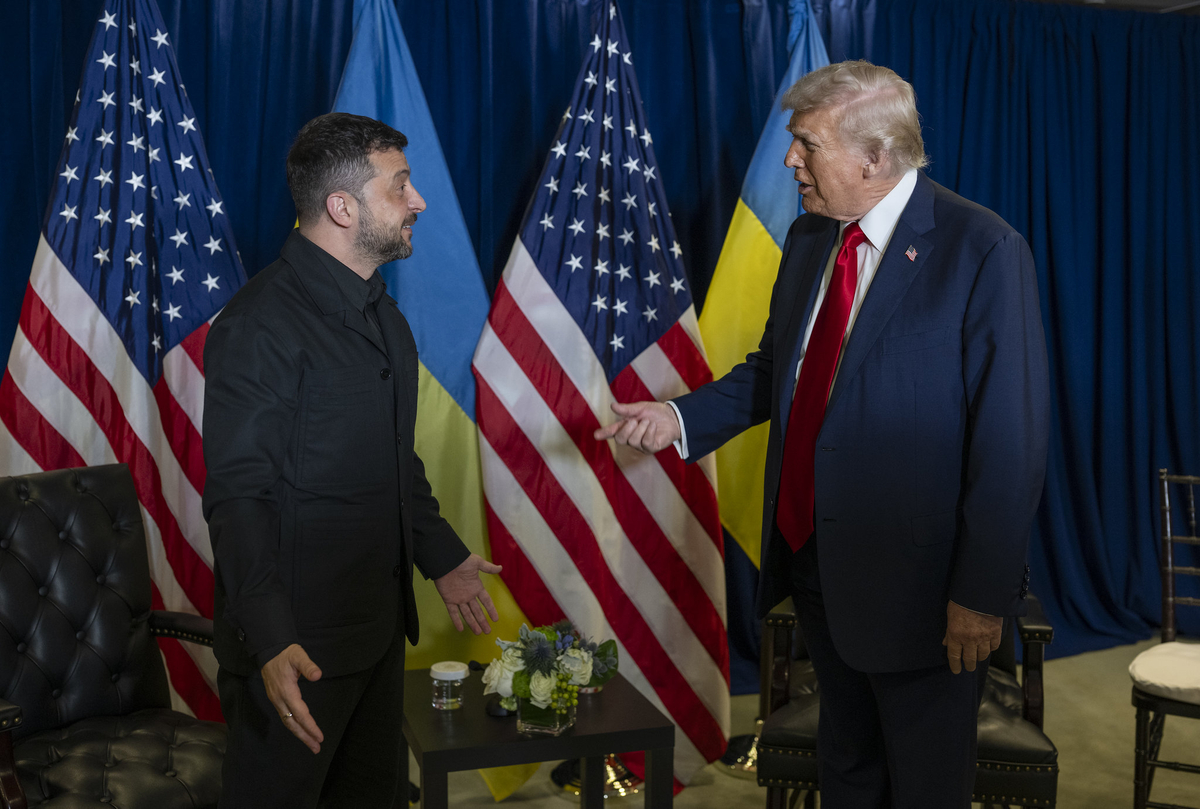WASHINGTON DC – The Trump administration this week notified Congress of a high-value arms sale for Ukraine while simultaneously weighing the provision of long-range targeting intelligence against Russian energy infrastructure, congressional sources told Kyiv Post.
The dual-track policy, as officials put it, gives Kyiv an immediate boost and signals a more hawkish posture from the White House following stalled diplomatic efforts.
JOIN US ON TELEGRAM
Follow our coverage of the war on the @Kyivpost_official.
$51 million in arms exports, and the Tomahawk question
The State Department formally notified Congress Wednesday night of $51 million in potential arms exports to Ukraine and its allies, two sources confirmed to Kyiv Post. This key procedural step, a requirement under the Arms Export Control Act, signals a sustained US commitment to supplying Kyiv, one official insisted.
The Department transmitted two certifications just before federal funding lapsed: one for the export of firearms, parts, and components for Ukraine valued at over $1 million, and a second, larger package covering $50 million or more in defense articles, including technical data and defense services, for a trilateral group including Ukraine, Belgium, and the United Kingdom.
These direct commercial sales underscore a continued flow of US defense technology to the region, another source said.
Crucially, this hardware push is being paired with high-level consideration of providing Ukraine with Tomahawk cruise missiles. Ukrainian President Volodymyr Zelensky on Thursday, once again, hinted at the possibility of acquiring longer-range weapons after meeting with Trump.

Other Topics of Interest
Ukraine Prepares to Sell State-Owned Sense Bank, Ukrgasbank
Sense Bank used to be Russian-owned Alfa Bank and earned a reputation for being a prominent retail and business bank, while Ukrgasbank earned a niche in working with energy projects.
Tomahawk missiles have a striking range of 2,500 km (1,550 miles) – easily capable of hitting Moscow and most of European Russia if launched from Ukrainian territory.
White House Press Secretary Karoline Leavitt cast the move as a return to providing leverage.
“President Trump has made it very clear he wants this war to end, but he has also said, if both sides aren’t serious about ending the war, the United States of America will continue to sell weapons to NATO,” Leavitt told reporters outside the White House on Thursday, adding, “NATO can use those weapons however they want with respect to Ukraine.”
New intelligence to target Russia’s wallet
The policy shift extends beyond missile systems. Two US officials told Kyiv Post on Thursday that the US is “currently in talks” with Ukraine about potentially helping Kyiv accurately strike its targets that constitute the Kremlin’s most important source of cash to finance the war.
Washington has also been asking its NATO allies to follow suit. The new emphasis on attacks against economic targets deep inside Russia aligns with the White House’s recent push to pressure Moscow economically.
Trump has sought to press European countries, India, and Turkey to cut off purchases of Russian oil, using tariffs and diplomatic leverage to “try to dry up funding for Russia’s invasion.”
Kremlin warns of “dangerous escalation”
The prospect of long-range US missiles and expanded targeting intelligence drew an immediate and sharp response from Moscow.
Kremlin spokesperson Dmitry Peskov called it a “dangerous symptom” and a potential escalation, warning that Russia would respond “appropriately” if the Tomahawk missiles were transferred.
However, Peskov also sought to downplay the practical impact, claiming that even with the new capabilities, “it will not change the situation on the battlefield.”
On intelligence sharing, Moscow was dismissive yet accusatory, stating that the “supply and use of the entire infrastructure of NATO and the United States to collect and transfer intelligence to the Ukrainians is obvious.”
Russia’s UN Ambassador Vassily Nebenzia weighed in, characterizing Trump as a “special kind of politician” who “likes quick fixes,” reflecting Moscow’s public belief that the US move is an ill-conceived attempt to force a resolution.
Logistics and the path forward
The Trump administration is attempting a high-stakes gamble: using the credible threat of deep strikes and economic pressure to force Putin into meaningful negotiations. However, the plan faces significant logistical and bureaucratic hurdles in Washington.
While the White House is weighing the request, a Tomahawk transfer is widely seen as difficult to execute.
Senior defense officials have stressed on Thursday that Tomahawk inventories are heavily committed to the US Navy and other uses. Consequently, making significant diversions of these missiles is difficult due to current readiness demands.
Further complicating the transfer is a slow manufacturing pace, which severely limits the ability to replenish stockpiles.
With only 55 to 90 missiles produced per year recently, transferring a meaningful number of weapons to Ukraine is unfeasible without impacting US warfighting readiness.
Furthermore, the immediate flow of arms may be affected by the lapse in US federal appropriations.
The State Department’s Directorate of Defense Trade Controls (DDTC), which issues the required export licenses, has announced its services are “significantly curtailed,” potentially creating a bottleneck for future weapon transfers, even those funded by European allies through the Prioritized Ukraine Requirements List (PURL) program.

